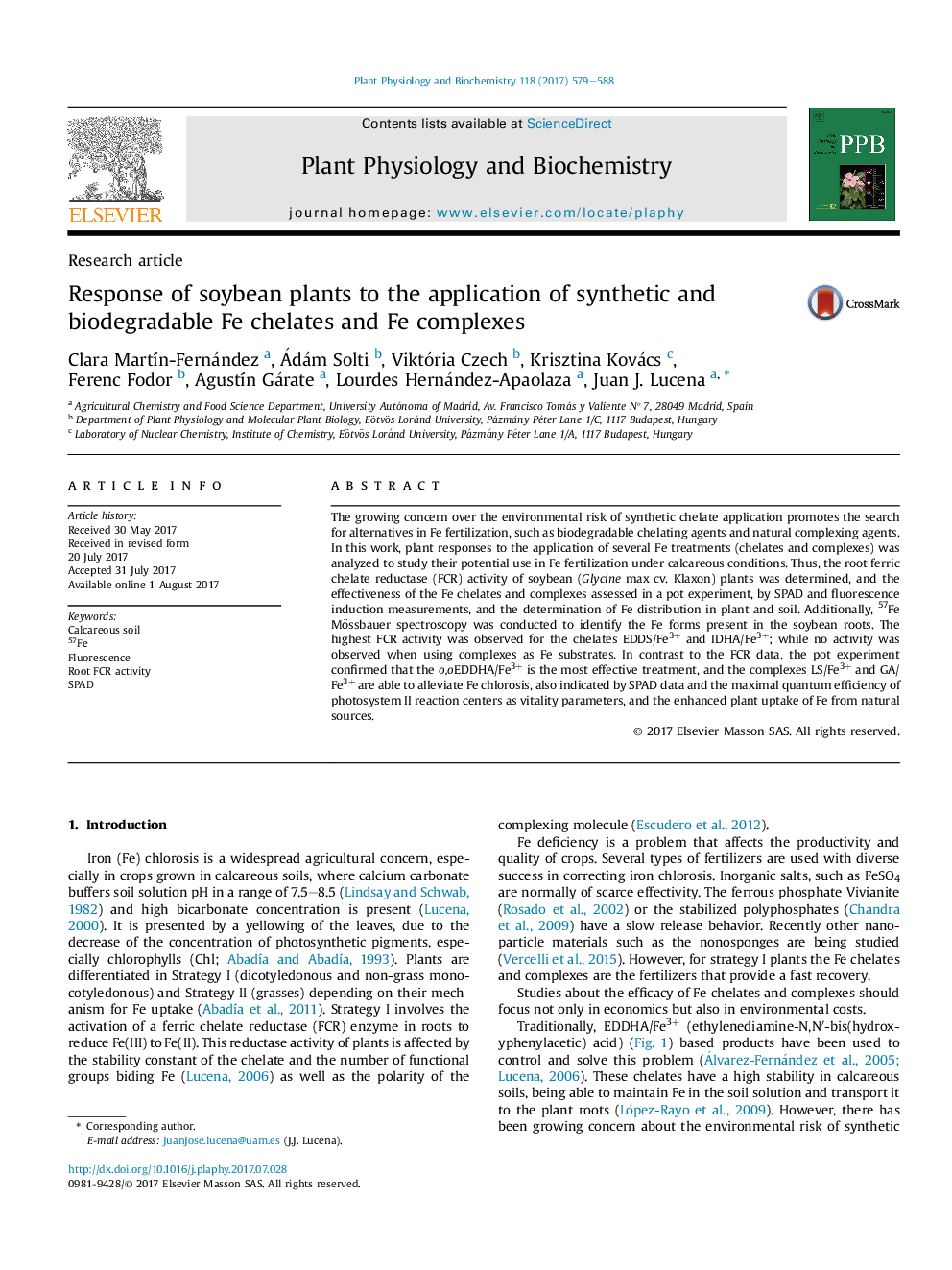| Article ID | Journal | Published Year | Pages | File Type |
|---|---|---|---|---|
| 5515474 | Plant Physiology and Biochemistry | 2017 | 10 Pages |
â¢Fe (III) Lignosulfonates and gluconates are potential Fe fertilizers to correct iron chlorosis.â¢They enhance soil Fe uptake.â¢They have positive effect on Chlorophyll content and maximal quantum efficiency of the PSII centers.â¢Similar doses of o,oEDDHA/Fe3+ are more effective, due to its high stability.
The growing concern over the environmental risk of synthetic chelate application promotes the search for alternatives in Fe fertilization, such as biodegradable chelating agents and natural complexing agents. In this work, plant responses to the application of several Fe treatments (chelates and complexes) was analyzed to study their potential use in Fe fertilization under calcareous conditions. Thus, the root ferric chelate reductase (FCR) activity of soybean (Glycine max cv. Klaxon) plants was determined, and the effectiveness of the Fe chelates and complexes assessed in a pot experiment, by SPAD and fluorescence induction measurements, and the determination of Fe distribution in plant and soil. Additionally, 57Fe Mössbauer spectroscopy was conducted to identify the Fe forms present in the soybean roots. The highest FCR activity was observed for the chelates EDDS/Fe3+ and IDHA/Fe3+; while no activity was observed when using complexes as Fe substrates. In contrast to the FCR data, the pot experiment confirmed that the o,oEDDHA/Fe3+ is the most effective treatment, and the complexes LS/Fe3+ and GA/Fe3+ are able to alleviate Fe chlorosis, also indicated by SPAD data and the maximal quantum efficiency of photosystem II reaction centers as vitality parameters, and the enhanced plant uptake of Fe from natural sources.
Graphical abstractDownload high-res image (263KB)Download full-size image
